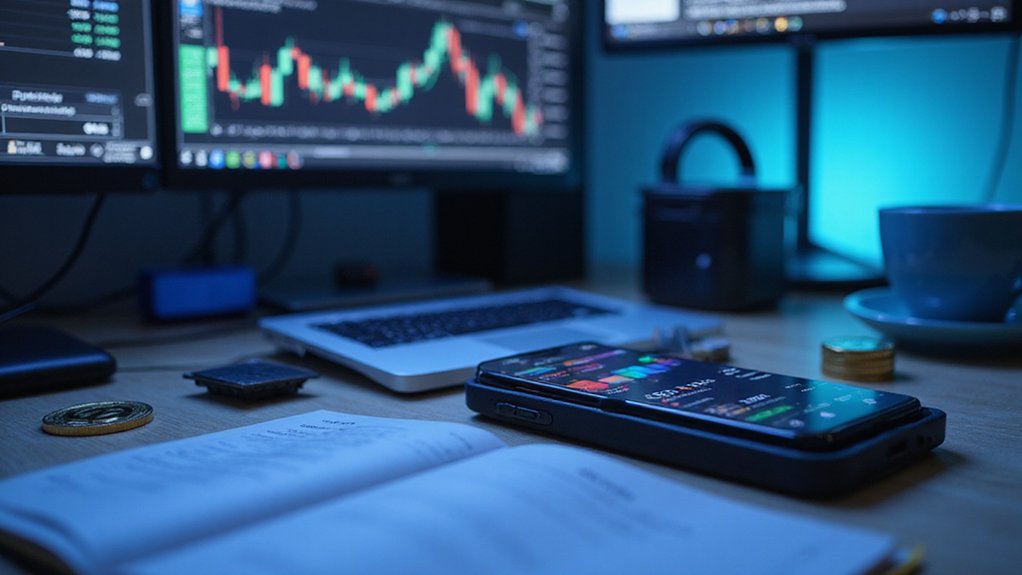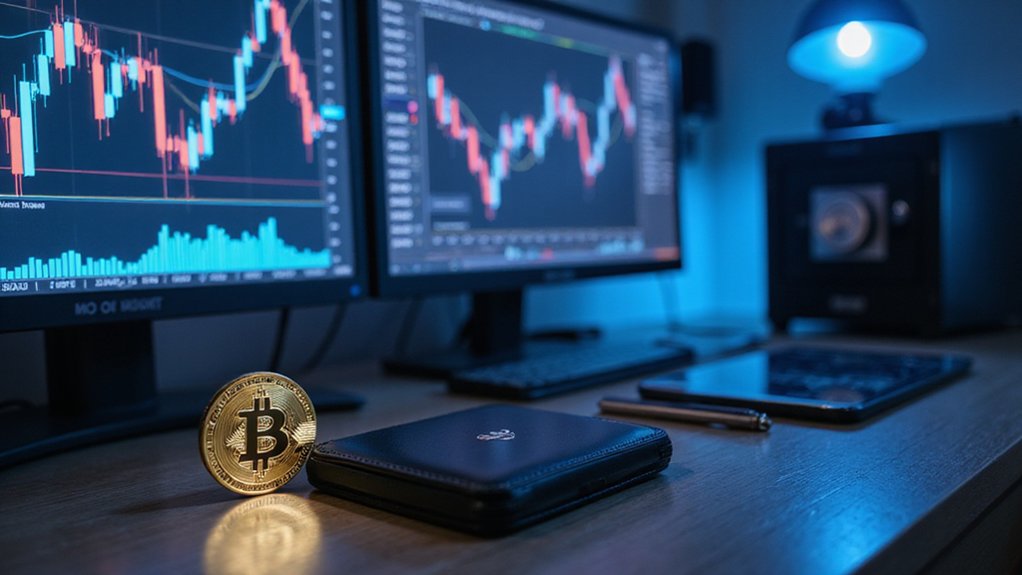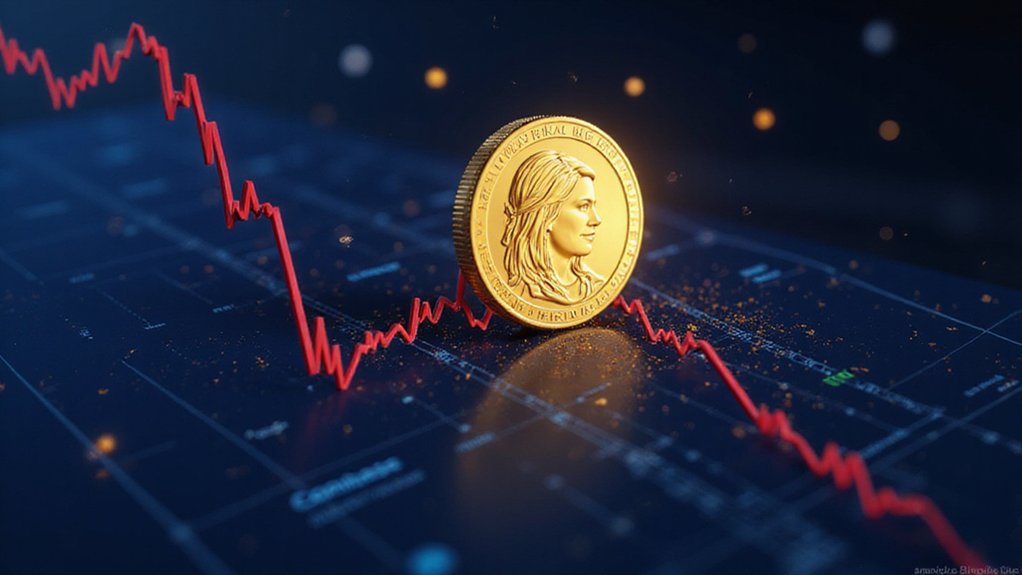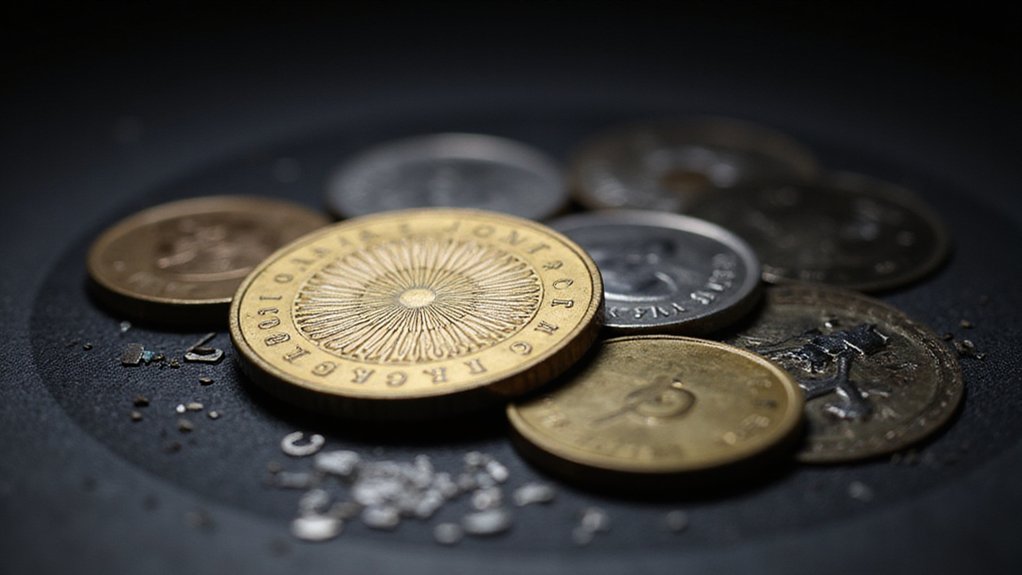Mastering digital asset management requires managing volatility through diversification while conducting thorough due diligence on tokenomics and team credibility. Investors must balance self-custody’s sovereignty against third-party convenience, all while adapting to evolving regulatory frameworks—where the SEC’s securities definitions and tax reporting requirements have transformed compliance from optional to existential. Hardware wallets, blockchain explorers, and specialized software like CoinTracker provide essential infrastructure for security and portfolio tracking. The savvy investor recognizes that fortune in this space favors those who combine technological acumen with disciplined investment principles.

The labyrinthine world of digital assets—a domain where fortunes are made and lost with the capricious swing of market sentiment—demands a sophisticated approach to management that many investors (particularly the newly-minted crypto enthusiasts who flocked to the space during the 2021 bull run) woefully lack.
These blockchain-based representations of value, encompassing everything from Bitcoin to the most esoteric NFTs, require not merely speculative intuition but a structured framework for acquisition, storage, and liquidation.
Prudent investors recognize that volatility—the double-edged sword that attracts and decimates the uninitiated—necessitates diversification across asset classes.
Volatility’s siren song beckons with promise while concealing the abyss—only diversification provides the ballast for crypto’s tempestuous seas.
One cannot simply allocate capital to a single cryptocurrency and expect sustainable returns; the ecosystem demands breadth in exposure tempered by depth in research.
The investor who fails to conduct due diligence on tokenomics, development team credibility, and project roadmaps courts disaster with remarkable efficiency.
Security considerations remain paramount in a space where irreversible transactions are the norm rather than the exception.
The dichotomy between self-custody (where one maintains complete sovereignty over private keys) and third-party custody (where convenience is purchased at the cost of counterparty risk) represents perhaps the most consequential decision in the digital asset journey.
Hardware wallets—those unassuming plastic devices housing cryptographic salvation—offer compromise between accessibility and security that most serious participants eventually embrace.
Understanding that private keys authorize all transactions by cryptographically proving ownership is essential to appreciating the gravity of security choices.
The regulatory landscape, once an afterthought in crypto’s libertarian genesis, now looms large over portfolio construction.
Europe’s MiCA framework, the SEC’s ever-expanding definition of securities, and tax authorities’ growing sophistication in tracking blockchain transactions have transformed compliance from optional to existential.
Portfolio management tools—from basic blockchain explorers to sophisticated analytics platforms—provide the infrastructure necessary for monitoring performance against market benchmarks.
These instruments, when wielded properly, transform the opaque nature of digital assets into transparent, actionable intelligence.
The investor who masters both technological tools and investment principles stands uniquely positioned to navigate this frontier market’s volatility while potentially capturing its outsized returns.
The IRS specifically recognizes digital assets as taxable property, requiring investors to maintain meticulous records of all transactions for proper reporting of capital gains and losses.
For those seeking simplified tax compliance, utilizing specialized software like CoinTracker can significantly reduce the burden by automatically calculating capital gains rates that vary between 0% and 20% depending on holding period and income level.
Frequently Asked Questions
How Do I Recover Lost Wallet Passwords?
Cryptocurrency investors can recover forgotten wallet passwords through multiple avenues: brute-force and dictionary attacks (using tools like BTCRecover), professional recovery services, seed phrase restoration, or metadata analysis of wallet files.
Bitcoin Core requires the wallet.dat file, while Electrum supports seed-based recovery.
Prudent users maintain encrypted backups, document seed phrases separately, and—perhaps counterintuitively—avoid overly complex passwords.
The recovery landscape presents a stark dichotomy: DIY methods (economical but limited) versus professional services (costly but more effective for complex encryptions).
Are There Tax Implications for Crypto Transfers Between Wallets?
Transferring cryptocurrency between personal wallets generally isn’t taxable—it’s merely relocating assets you already own.
However, the devil lurks in the details; transfers between exchanges or wallets involving different cryptocurrencies constitute taxable events, triggering potential capital gains obligations.
Transfer fees, those pesky blockchain gatekeepers, exist in regulatory limbo in many jurisdictions, though they might affect your cost basis calculations.
Meticulous record-keeping remains paramount, lest one invite the scrutiny of increasingly crypto-savvy tax authorities.
What Insurance Options Exist for Digital Asset Protection?
Insurance options for digital assets have evolved considerably, offering several protective measures against the uniquely volatile risks of crypto ownership.
Exchange insurance shields against platform hacks, while wallet coverage addresses private key loss.
Institutional players typically opt for custody insurance or extensive crime policies.
The more sophisticated investors might consider specialized protections for smart contract failures or staking slashing risks—protections that, remarkably, weren’t even conceptualized before blockchain’s emergence.
How Do Hardware Wallets Compare to Custodial Solutions?
Hardware wallets offer superior security through offline key storage and user sovereignty, though they demand technical proficiency and provide no safety net for lost devices.
Custodial solutions, meanwhile, sacrifice security fundamentals (one might call this the original crypto sin) for convenience, allowing third parties to control keys while offering recovery options and user-friendly interfaces.
The choice ultimately hinges on investment strategy—long-term hodlers gravitate toward hardware, while active traders often accept the counterparty risk of custodial arrangements.
Can Smart Contracts Automate My Digital Asset Inheritance Plan?
Smart contracts can indeed automate digital asset inheritance plans, executing predetermined distribution rules upon verified death.
These self-executing contracts can handle conditional transfers (age requirements, milestone achievements), periodic distributions, and direct digital asset transfers—all while bypassing probate proceedings.
The blockchain’s immutable ledger provides cryptographic protection and transparency, though the technology isn’t without complexities.
Anyone implementing such automation should balance technological efficiency with jurisdictional legal requirements and maintain thorough documentation for beneficiaries.









